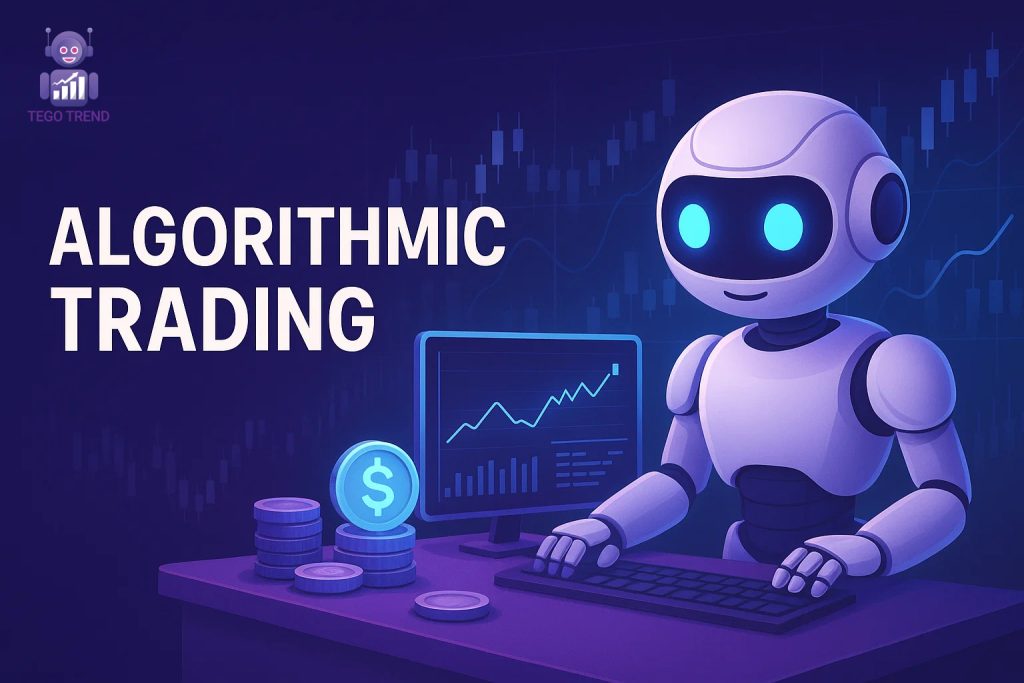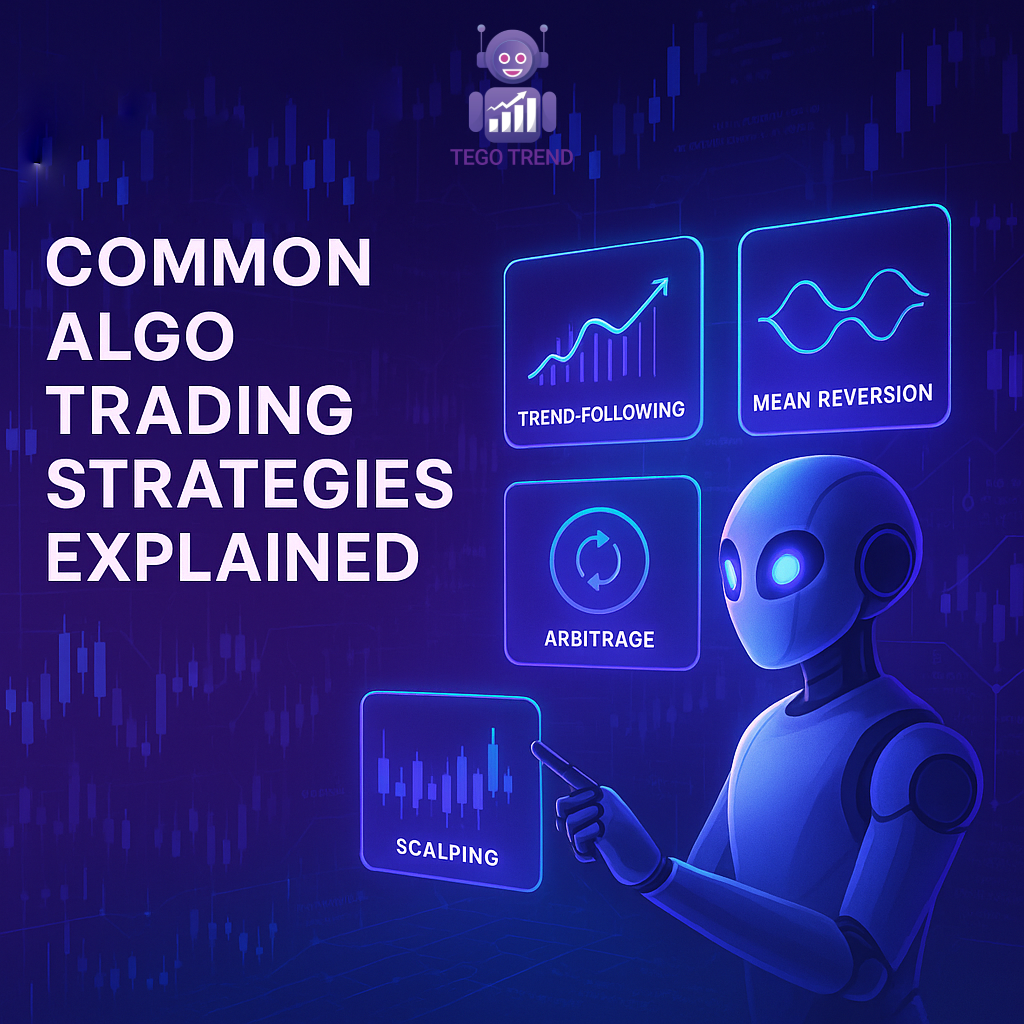Looking to master algorithmic trading? This algo trading guide is designed to help both beginners and experienced traders understand the tools, strategies, and technologies behind automated financial markets.

What is Algo Trading and How Does It Work?
In today’s fast-paced financial markets, algo trading has become one of the most efficient ways to participate in trading without being glued to the screen all day. But what exactly is it, and why is it gaining such popularity?
Algo trading, short for algorithmic trading, is the use of computer programs to execute trades based on predefined strategies. These strategies follow a specific set of rules involving price, timing, volume, or other market-related conditions. Once programmed, the algorithm can automatically place orders when certain criteria are met—no manual input needed.
The concept is simple but powerful. Instead of making decisions in real-time under pressure, traders can define their logic beforehand. The software then continuously monitors the markets and executes trades as soon as the opportunity arises. This helps remove emotional bias, enhances speed, and improves consistency.
One of the biggest advantages of algo trading is its ability to scan and analyze multiple markets simultaneously. A human trader might miss an opportunity or react slowly, but an algorithm can process large amounts of data and act within milliseconds.
To get started with algo trading, traders typically use platforms that support APIs or third-party tools that allow strategy integration. Programming knowledge—especially in languages like Python or JavaScript—can be helpful, but even those without a coding background can now access simplified, no-code solutions.
Despite its advantages, algo trading isn’t foolproof. The success of any strategy depends on market conditions, risk management, and continuous monitoring. It’s not a “set and forget” tool—it requires attention, adjustment, and backtesting to stay effective.
In conclusion, algo trading combines logic, speed, and automation to give traders a more efficient way to trade. Whether you’re a retail investor or a professional, it offers a modern approach to navigating the markets.
If you have any questions about algo trading or need personalized guidance, feel free to contact us — our team is here to help.

Benefits of Algo Trading for Retail Investors
For years, algorithmic trading was a tool used mostly by large institutions and hedge funds. But with the rise of accessible platforms and affordable technology, algo trading is now within reach of individual investors. So, what exactly makes it so appealing to the everyday trader?
1. Algo trading is Speed and Precision
One of the most obvious advantages is speed. Algorithms can analyze real-time data and execute trades in milliseconds—much faster than any human could. In volatile markets, this split-second execution can make the difference between profit and loss.
2. Emotion-Free Decisions
Retail traders often struggle with emotional trading—panic selling, chasing losses, or overtrading. Algo trading removes this entirely. Every decision is based on logic and predefined rules, not gut feelings or stress.
3. Backtesting and Strategy Optimization
Before risking real capital, you can test your strategy on historical data. This backtesting process helps you understand how your trading logic would have performed in past markets, giving you confidence (or exposing weaknesses) before going live.
4. Increased Efficiency and Multitasking
An algorithm can monitor multiple markets and asset classes at once—something that’s nearly impossible for a human trader. This allows for more diversified opportunities and better use of time, especially for those trading part-time.
5. Cost Saving and Scalability
With proper setup, algo trading can help reduce transaction costs by minimizing slippage and avoiding overtrading. It’s also scalable, meaning a trader can apply the same logic across different instruments or accounts without increasing their workload.
6. 24/7 Market Monitoring
Unlike human traders who need rest, your trading bot doesn’t sleep. It can monitor markets around the clock, especially useful in crypto or forex markets that don’t follow a 9-to-5 schedule.

To explore more in-depth insights about algorithmic trading strategies, visit Investopedia’s comprehensive guide on algorithmic trading — a trusted resource for financial education.
Common Algo Trading Strategies Explained
Understanding algo trading means knowing the different strategies traders use to automate decisions. Each strategy is built on market logic and tested for reliability before being deployed. Here are some of the most popular ones:
1. Trend-Following Strategies
These are the simplest to implement. They’re based on technical indicators like moving averages or momentum oscillators. The idea is to ride the trend—buy when the price is rising and sell when it starts to fall.
🧠 Example: A 50-day moving average crossing above the 200-day average triggers a long position.
2. Mean Reversion
This strategy assumes that prices will return to their average over time. If an asset moves significantly away from its historical mean, the algorithm executes trades expecting it to revert.
🧠 Example: If a stock price drops 5% below its 20-day moving average, the algo might buy expecting a bounce back.
3. Arbitrage Strategies
These look for small price differences in the same asset on different markets or between related securities. The algo exploits the inefficiencies by buying low and selling high—almost simultaneously.
🧠 Example: Buying BTC on one exchange at $29,950 and selling it on another at $30,000.
4. Scalping
Scalping strategies aim to make many small profits by executing dozens—or even hundreds—of trades in a single day. These require high-speed infrastructure and tight risk control.
🧠 Example: Buying and selling index futures based on one-minute price action.
5. Market Making
Here, the algorithm constantly places both buy and sell orders to profit from the bid-ask spread. It’s commonly used by brokers or institutions but can be adapted for retail traders in highly liquid markets.
Want to Build Your Own Algo Trading System?
You don’t need to be a programmer anymore. With platforms like TegoTrend, you can start using ready-made strategies or create your own with minimal coding. The ecosystem of algo trading tools is expanding rapidly—from Python-based frameworks to drag-and-drop interfaces.
If you’re serious about taking your trading to the next level, algo trading offers the tools to make that happen—faster, smarter, and more efficiently.

How to Start Algo Trading in 2025 (Step-by-Step)
Starting your algo trading journey doesn’t have to be overwhelming. Whether you’re a retail investor or an experienced trader, the process can be broken down into clear, actionable steps.
1. Understand the Basics of Algo Trading
Before writing a single line of code—or even using pre-built strategies—you need to understand how markets function. Learn about order types, trading instruments (like stocks, futures, and forex), and the risks involved.
📌 Tip: Read a few beginner guides on algo trading platforms or take a short course to get familiar with core concepts.
2. Choose a Platform or Broker that Supports Algo Trading
Not all brokers offer algorithmic access. Look for platforms that support API trading or have built-in automation tools. Some brokers even offer no-code environments to help beginners build strategies without programming.
✅ Popular options: MetaTrader 4 (MT4), MetaTrader 5, TradingView, QuantConnect, and broker APIs like Zerodha, Alpaca, and Interactive Brokers.
3. Pick a Strategy and Backtest It
Start simple. Pick one algo trading strategy (like moving average crossover or RSI-based mean reversion). Backtest it using historical data to see how it would’ve performed in the past.
📌 Important: Backtesting doesn’t guarantee future results, but it’s a key part of building confidence in your strategy.
4. Choose the Right Tools and Language (If Needed)
If you plan to code your own strategies, Python is the go-to language due to its simplicity and vast library support. Libraries like pandas, NumPy, ta, and Backtrader can make development faster and easier.
🧠 Don’t want to code? Use algo platforms with drag-and-drop builders or pre-made bots to get started.
5. Start Paper Trading (Simulated Environment)
Before putting real money at risk, use a demo or paper trading account to simulate your algorithm’s performance in live markets. It’s a safe way to test execution and logic without financial loss.
6. Go Live with Small Capital
Once you’re confident in your strategy, go live—but start small. Monitor the algo’s performance closely and be ready to adjust. Market conditions change, and so should your strategy.
7. Track, Optimize, Repeat
No algo strategy works forever. Use performance reports to track metrics like win rate, drawdown, and risk-reward ratio. Tweak your approach regularly and continue learning from both wins and losses.

Is Algo Trading Legal and Profitable in 2025?
✅ Is Algo Trading Legal?
Yes — algo trading is completely legal in most countries, including the US, UK, India, and across the EU. However, it’s important to follow the rules set by financial regulators like:
SEBI (India)
SEC (USA)
FCA (UK)
These authorities monitor market activity to ensure fairness, transparency, and investor protection. Most restrictions are aimed at high-frequency trading (HFT), not individual or retail algorithmic strategies.
If you’re using APIs from a regulated broker and trading your own funds, you’re generally within legal limits. But:
📌 Always check with your local regulator
If you’re offering algo strategies to others or managing third-party funds, you may need special licenses or approvals.
💰 Is Algo Trading Profitable in 2025?
Yes — but with conditions.
Algo trading can be very profitable when backed by data, disciplined testing, and proper risk management. Many institutional investors and hedge funds rely heavily on algorithmic systems for efficiency and scale.
However, retail traders often fall into traps:
❌ Overfitting to past data
❌ Ignoring real-time market volatility
❌ Running strategies without stop-losses or safeguards
To be consistently profitable, you need to:
Backtest using robust, clean historical data
Use realistic assumptions (e.g. slippage, fees)
Monitor performance regularly
Adapt your logic to changing market conditions
🎯 Tip: Start with one solid strategy and focus on consistent improvement rather than chasing profits.
Final Thoughts: Why Algo Trading Matters Today
The world of trading is evolving—and algo trading is no longer just for quants or hedge funds. Today, any smart investor with access to the right tools can build and automate strategies that remove emotion, reduce risk, and maximize efficiency.
In 2025 and beyond, the real edge belongs to those who combine market knowledge, data analysis, and automation into one sharp system.
Whether you’re just getting started or looking to upgrade your current process, embracing algorithmic trading could be your most powerful move yet.
Ready to take control of your trading journey? Start applying the insights from this algo trading guide and unlock smarter, faster, and more efficient trades today!
Start with TegoTrend Now!

